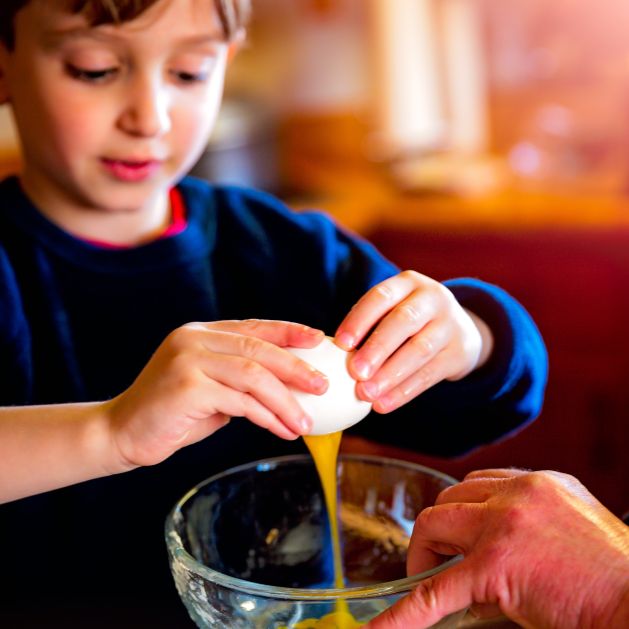Written by Kristina Spasovski (BCBA/Registered Psychologist/Master of Science in Psychology) –
When children are born they are solely dependent on others, all their needs are met by those who care for them. Infants and young children rely on others for feeding, toileting, bathing, dressing, and beyond. Parents and caregivers are initially the people we solely rely on, our care providers, the ones who meet all our needs.
As children get older, they begin to develop a level of independence beginning with small steps such as holding their own bottle. This independence progresses as the child develops and children are naturally expected to take on more responsibility for themselves and the things around them. For some children however, particularly children with developmental delays and disabilities, achieving independence in areas such as daily living skills may be one of the many difficulties they face.
So how do we teach our children to be more independent in their daily lives? What do we teach them? What will the child get out of this? What will the parents get out of it? More importantly, why should we teach them these skills when they may already face so many other difficulties in life?
Naturally, parents and caregivers want to make their child’s life easier and teaching these skills can sometimes be a difficult task for both the child and the parent. Sometimes the process can seem to take an eternity. Who wants to spend 45 minutes dressing each morning, or half an hour setting the table?
So why should we battle to teach these skills and what will the child and parent get out of it?
Teaching these skills collectively will help your child function independently within the home. There is an abundance of research that states levels of independence are linked to quality of life. More importantly teaching your child to be independent in some areas of their life will install a sense of purpose, accomplishment, and pride, not only in your child but yourself also.
After working with many children and people with developmental disabilities over the years, I’ve often heard statements like “She does so much more for you” or “You can get him to do so much more then I can”. We believe, however, that with guidance, support, and perseverance parents and caregivers are more than capable of teaching their children these skills. An important thing to remember is time spent now is time saved in the future.
So, what do we teach? How do we teach it?
Independence does not need to stop at feeding, dressing, bathing, and toileting. Independence can be taught in many areas which together can help your child function independently within the home. Some examples include;
- Cooking – helping pass items out of the fridge, measuring items, or putting items into a bowl/frying pan.
- Cleaning up – putting items in to the dishwasher, taking items out of the dishwasher, sorting the cutlery drawer, wiping down the bench.
- Dinner – setting up the table (this can include only one item e.g., bring the cups over), taking the food over to the table, serving items for themselves.
- Laundry – passing the pegs, pass the clothing, match the socks up, sort out the laundry e.g., all shirts go together, put away in correct drawers.
- Tiding away the toys.
Remember these don’t have to be done perfectly to begin with, initially participation is key, and practice makes perfect. Additionally, independence does not need to mean ‘alone’. Independence can be taught and worked on with company. Getting your child involved with daily tasks and running of the household means they can participate alongside other family members and independently complete tasks they are capable of doing. It is a perfect way to get them involved with their siblings.
How do we teach these skills?
Start small, pick one thing and build on it. For example, if dressing is a goal, work on getting your child to independently put their pants only, the parent can do the rest. Or if this is difficult in itself, begin by getting them to only pull their pants up and the parent can do the rest. Once they are independent at this step, add in an additionally step. For example, pants and shirt or put one leg through the pants hole and pull pants up. Other examples include tidying away toys, have the child pack away one toy, then two, then three.
- Provide a clear instruction – keep it concise e.g. “pull your pants up” “pack up your toys”.
- Give your child an opportunity to do it themselves – wait about 5s.
- If your child does complete the instruction – show them what you want them to do – act it out!
- If your child is still struggling point to what you want them to do e.g. point to the toy, then to the basket.
- If they require more help, help them to do most of the task but let them complete the last bit on their own e.g. help them pick up the toy and take it close to the basket and they can put it in independently.
- If they are still finding it difficult do it together.
Instruction > Wait > Show > Point > Help a little > Help some more
Do something fun together after they have completed their task. For example, pick your child up and spin them around after they have put their toy away, jump on the bed after getting dressed, have them lick the spoon after mixing the chocolate icing, have a drink of their favorite juice after taking the cup or cups to the table.
The key is to Practice Practice Practice and apply the three P’s.
Perseverance, Patience, and Practice.
Remember to take the time to stop and reflect what you and your child have achieved. Even little steps deserve the recognition of all the hard work you and your child have put in.

